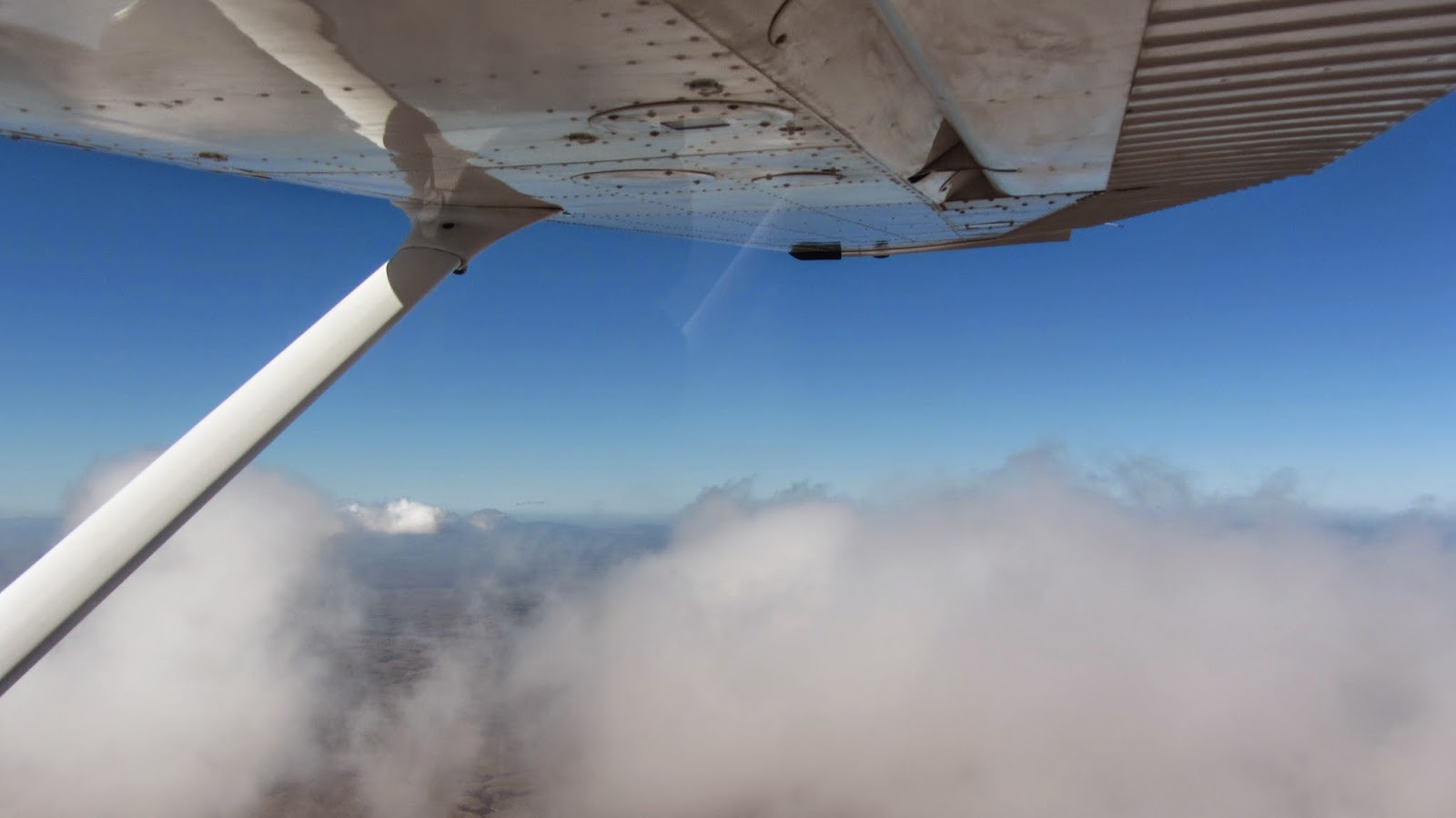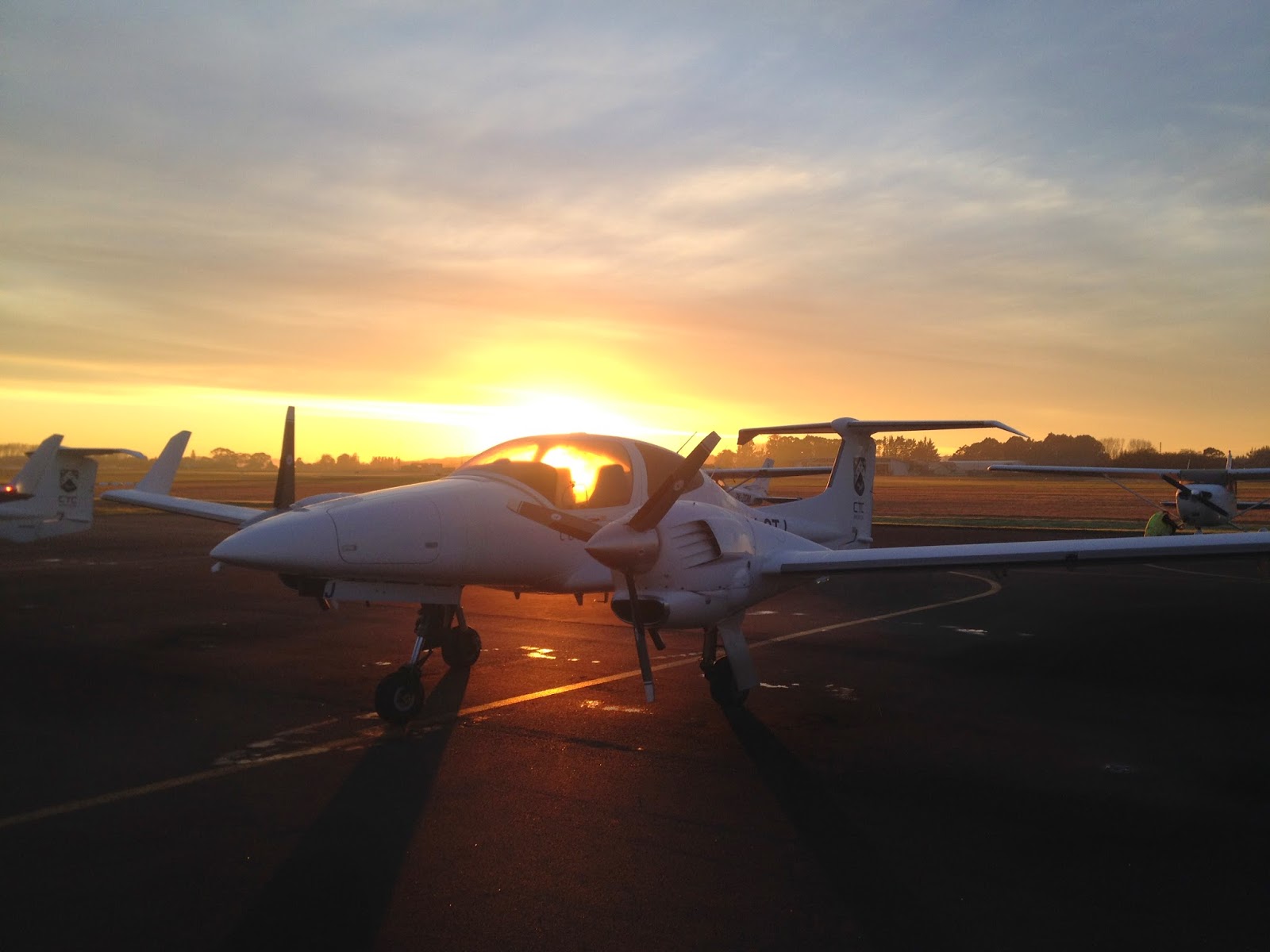So a lot has
been happening here in the two months since my last post. We started the Multi
Engine phase with two days of ground school, don’t think you get away from it
after you leave the UK! After these two days, I think it’s fair to say we all
came out of it pretty confused. It’s not until you get into the sim and
actually see the things we were getting taught that it all seems to come
together and make more sense.
 |
| Clearways seen on approach to runway 18L |
So the first
six flights in this phase are in the DA42 simulator. We start off practicing
basic IF techniques such as selecting and holding attitudes, altitudes and
headings. We then move onto tracking VOR’s, in other words using the navigation
aid based at the airport to fly either a constant bearing to or from it. Next it
is onto VOR holds, which are pretty demanding the first few times due to you
having to think about a lot of things in a very short space of time, but once
the technique is understood they become a lot easier to manage. We then go from
the holding lesson onto going from the hold and into the VOR/DME approach
before the final lesson which is GPS holds and approaches. The final flight in
the sim is a check to see that all the techniques have been sufficiently
understood before moving onto practice the techniques in the Cessna 172.
 |
We only have
eight flights in the Cessna in total consisting of practicing approaches and
holds at Hamilton before starting the cross country flights which allow you to
fly different approaches at airports such as Rotorua and Tauranga. It’s quite
nice to get away from Hamilton and fly approaches that are new to you.
 |
| Engine shut down in flight as part of one of the Asymmetric lessons |
 A couple of
weeks ago we moved onto the final stage of training out here which meant moving
onto the DA42 Twinstar! We have a mix of VFR and IFR flights on the Twinstar
which means we get quite a range of flying done on it. So far I have had 3
flights in it, which have been: Normal Operations – this lesson was just getting
used to the handling characteristics of the aircraft as well as practicing some
medium and steep turns as well as stalls. The next lesson was circuits,
obviously with the Twinstar having two engines means it goes quite a bit faster
than either the Katana or Cessna so there is less time to complete radio calls
and checks before landing in the circuit. The most recent lesson I had in it
was Asymmetric Flight – in other words flying on one engine and practicing
having an engine failure after takeoff and continuing in the circuit. I really
enjoyed these three lessons; it is quite a lot easier than I had thought it
would be to identify which engine has failed. The first five lessons are
conducted in VFR conditions before moving back into the sim for 6 IFR flights
and then into the aircraft again IFR.
A couple of
weeks ago we moved onto the final stage of training out here which meant moving
onto the DA42 Twinstar! We have a mix of VFR and IFR flights on the Twinstar
which means we get quite a range of flying done on it. So far I have had 3
flights in it, which have been: Normal Operations – this lesson was just getting
used to the handling characteristics of the aircraft as well as practicing some
medium and steep turns as well as stalls. The next lesson was circuits,
obviously with the Twinstar having two engines means it goes quite a bit faster
than either the Katana or Cessna so there is less time to complete radio calls
and checks before landing in the circuit. The most recent lesson I had in it
was Asymmetric Flight – in other words flying on one engine and practicing
having an engine failure after takeoff and continuing in the circuit. I really
enjoyed these three lessons; it is quite a lot easier than I had thought it
would be to identify which engine has failed. The first five lessons are
conducted in VFR conditions before moving back into the sim for 6 IFR flights
and then into the aircraft again IFR.
After this
set of IFR flights we once again move back to VFR in preparation for the CPL flight
test which is the last flight in New Zealand. We have three CPL Profiles to
practice all of the fundamental techniques needed to pass the CPL. The test is
broken down into six sections consisting of:
· Departure
· Airwork
· En-route Procedures
· Approach and Landing
· Abnormal and emergency procedures
· Simulated asymmetric flight
Away from
the flying - a few of us recently went down to Taupo to go skydiving which was
amazing! It was number one on my list of things to do in New Zealand and it
definitely lived up to expectations, I’m very pleased I managed to do it and
the weather was excellent for it too!
























